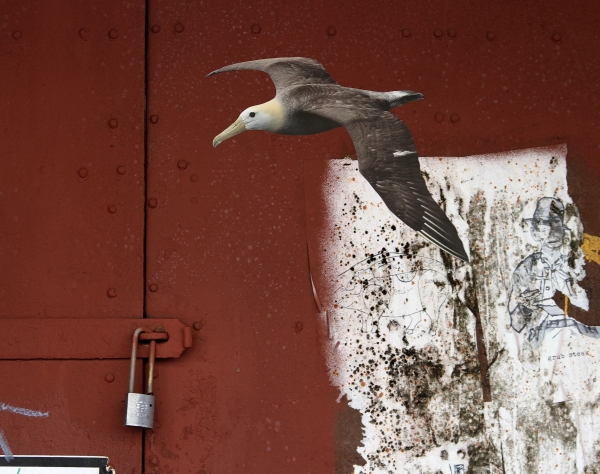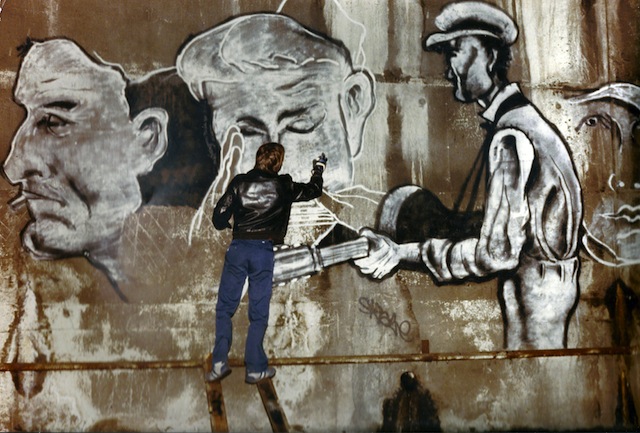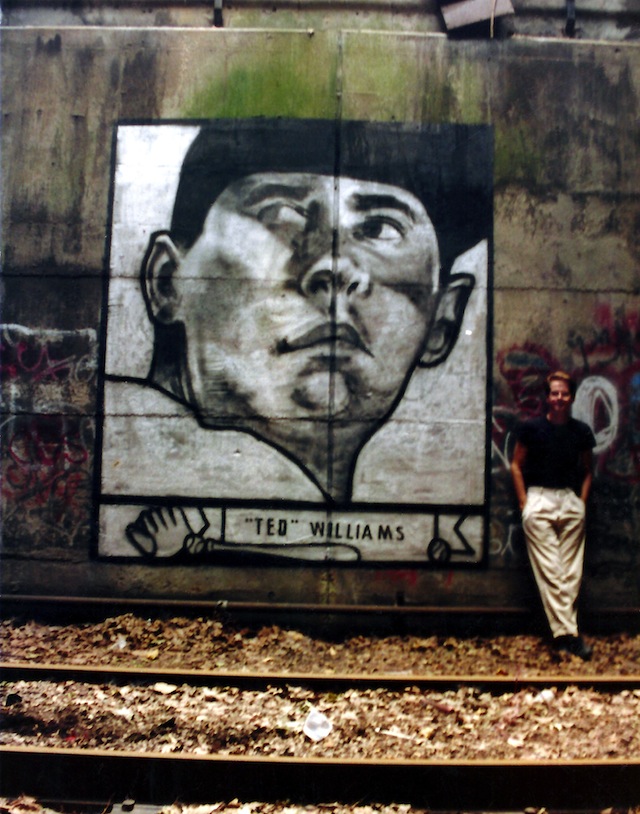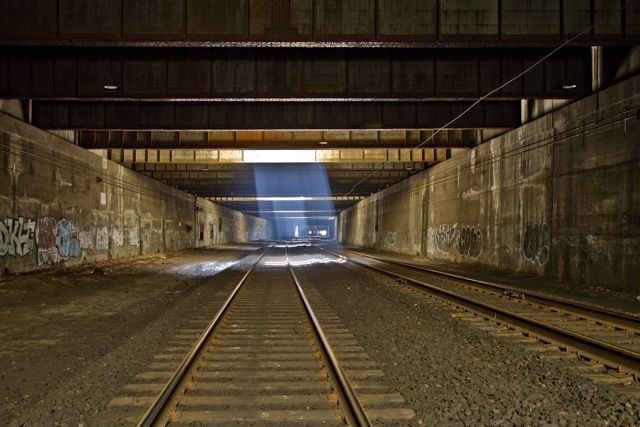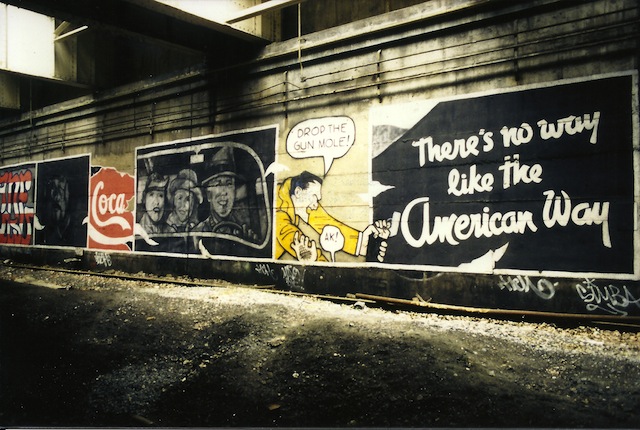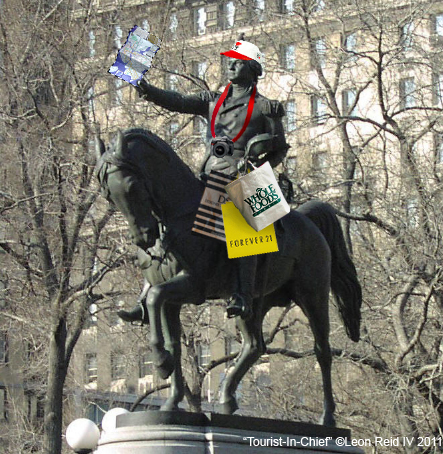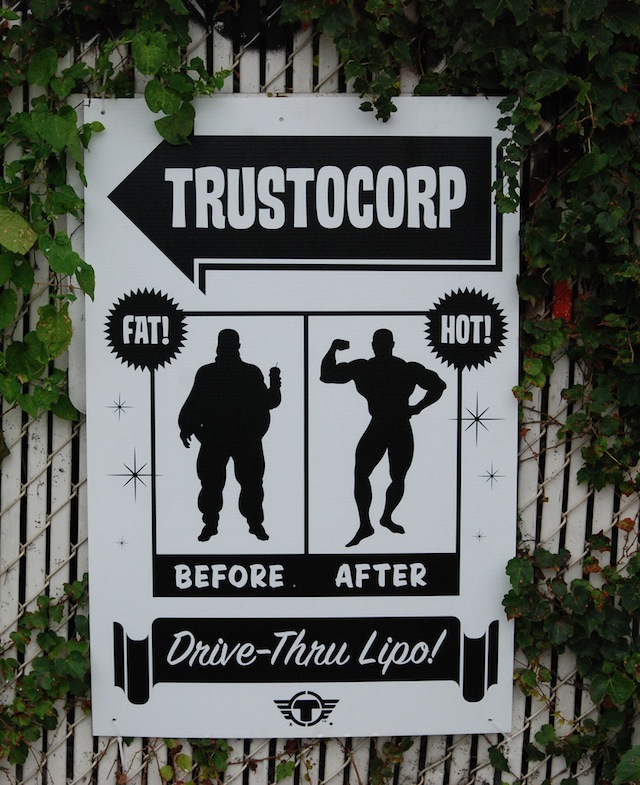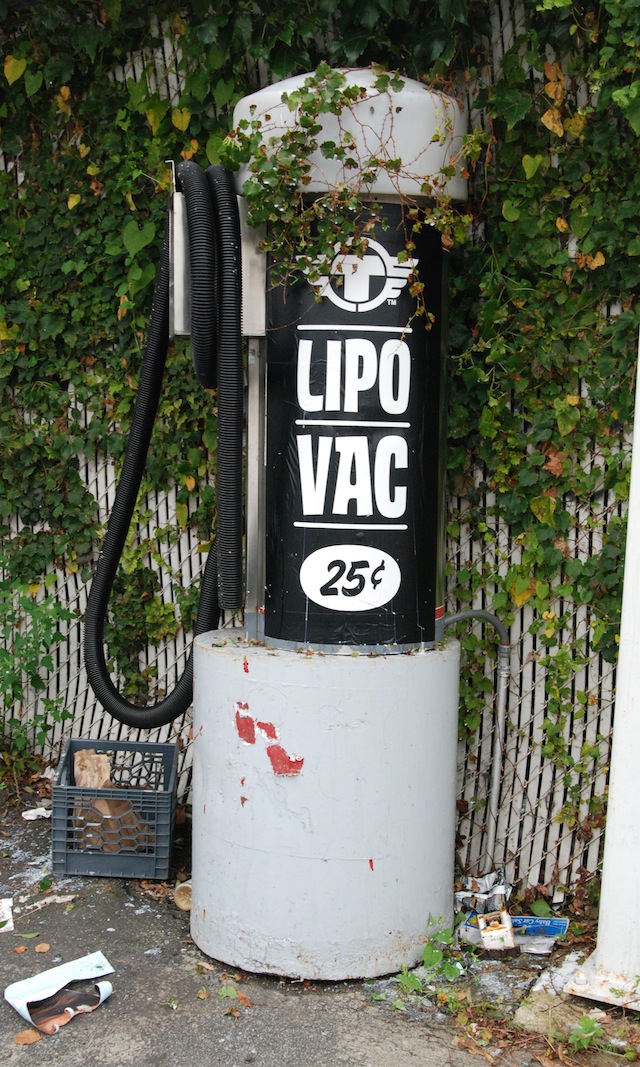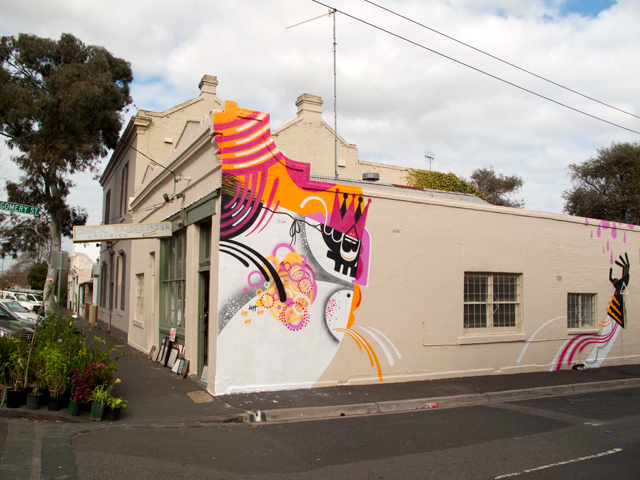
Reka (also an original member of the Everfresh crew) is another of Melbourne’s street art pioneers. Reka has been decorating the streets of Melbourne and surrounds since 2002 and is another of my favourite Melbourne artists.
Reka has traveled and painted across America, Asia and South East Asia, including San Francisco, New York, Malaysia, Hong Kong and Tokyo.
I’ve watched Reka’s style evolve dramatically over the years, and I love what I see. From the older days with black and white paste-ups and pieces featuring Reka’s infamous characters to his newer painting styles. His last show at Backwoods gallery, ‘Down Low Too Slow‘, was a smasher and featured pieces painted in 3D (glasses required to take in the full effect).
I caught up with Reka at Everfresh Studios. This is what we talked about…
LM: You must be excited about ‘Young and Free‘. What do you think about this amazing opportunity and the impact it will have on the awareness of Melbourne, and Australian, street art, graffiti and artists?
Reka: I’m privileged and honoured to be part of this amazing show. The line-up of artists is seriously the creme of the crop coming out of Australia right now: a nice balance of traditional graffiti writers, street artists and pop artists. I think Melbourne and Australia has a really healthy scene, but I don’t think it has enough international exposure. I think ‘Young and Free’ will put Australia on the map, if its not there already! I’m really not sure of the impact that this show will make but I know at the very least it is positive and it’s an important start.
LM: Tell me about your background. How did you get into street art?
Reka: I actually came from a graffiti background. Mainly just doing stupid delinquent shit like tagging on pretty much anything I could find. I was ruthless and lacking style, but we all did when we started. Growing up next to a major train-line in Melbourne really opened my eyes to graffiti and different styles. In the early 2000’s I made the shift to street art. Though, at that time the name street art didn’t exist. I just liked doing characters and other abstract things. I just wanted to do my own thing and not follow what others were doing. The process was the same to graffiti – I was still getting up, but wanted to take my name and my work in a different direction. These days I explore graffiti and street art separately but I find both are a very important part of my creative journey.
LM: What does your name mean?
Reka: When I started graff in the late 90’s I came up with ‘REKA’ to match my enthusiasm of literally “wrecking” shit and destroying. I also wanted to find a combination of letters that I liked and that I was comfortable to write. I like how the ‘R’ and the ‘K’ compliment each other. The same goes with the ‘E’ and the ‘A’. Over the years the meaning of my name has dramatically changed, but my core ethics have stayed the same. In the end I always push style over anything else and rely on that that people can identify with rather than to have to put ‘Reka’ next to everything I do.
LM: What do you enjoy most about the whole street art process? The creation, the night missions, etc?
Reka: Street art has always been about the process: the exploration and the action. When I’m out bombing, whether it’s painting my characters, catching tags or sticking up posters, the end result is very secondary to me. What’s most important is the feeling I get. I do it for myself. It’s very selfish! Don’t get me wrong, I love people seeing my work and knowing that I did that illegally, but it’s a different felling I get from that. I also love painting legal walls and try to push my work on a large scale. Creating is very important to me too, but I still find it different to my illegal work. I get bored doing the same shit over and over again so that’s why I find it important to keep my work on the street illegally and also paint large scale commissioned walls. Using different mediums is a very important part of my practice. It keeps it fresh and exciting. I just like exploring in every sense of the word.
LM: Who or what inspires you?
Reka: I find and source inspiration from everything. Often it’s not from other artists but from nature and my surroundings, whether it’s patterns created from rusted metal, animals, rubbish etc. I keep my senses open and try to take it all in. I have to say that my studio, Everfresh, is a big inspiration and constant motivation for me. I find that it’s very important to surround yourself with creative people. Even if there is no actual dialogue or communication, just seeing them paint and create is very inspiring for me.
LM: Which artists are you into at the moment? Local and International?
Reka: I have to say that Roa and Blu are two artists that I have been looking at a bit recently. Not stylistically but my interest into their process and application of their art onto walls. My focus has shifted to painting large-scale murals and to see these two paint monster size works on the side of buildings is very inspiring. Unfortunately it’s very difficult to find walls like these in Australia. No one is really doing this compared to what I’ve seen in Europe and the USA. This is something that I want to fix.
LM: Where do you work from and what is your studio space like?
Reka: I mentioned I’m part of the Everfresh studio. We created this studio nearly eight years ago. Everfresh consists of mainly street artists that have come together with similar interests and their passion to paint but also to create artworks and push their work in the galleries and the fine-art world. The actual studio is a visual mess consisting of pretty much anything we have found and collected over the years. Although we all work separately on our own projects, whether it’s commercial work, walls, artwork etc., our essential core is that we all collaborate and work together too. I think that’s what separates us from other studios. My own studio is a blend of stuff I’ve collected including rusted spray cans, weird toys and of course my art and paints/materials etc.
LM: What is always in your “toolkit”?
Reka: Pens, markers, laptop, brushes, my black-book, NY fat-caps, spray paint, a lighter and acrylic paint.
LM: What has been the highlight (or highlights) of your career to date?
Reka: Honestly this ‘Young and Free’ show is pretty much up there. Exhibiting my work and also painting walls with artists that I have admired and have looked up to is a great privilege and honour to have been involved in. I haven’t been involved in too many international exhibitions yet – it’s something that I am just starting to do now. The NGA (National Gallery of Australia) recently acquisitioned some pieces of mine and had a recent touring exhibition around Australia. It is a great honour to have work in your country’s national gallery collection. I was also involved in a month long residency at the NGV (National Gallery of Victoria) in Melbourne. I really didn’t think my work would end up in galleries, let alone these kinds of institutions.
LM: Tell me about your last show, ‘Down Low Too Slow’, in March.
Reka: I always love staging exhibitions in my home city Melbourne. I guess that’s where I have generated most of my work both in galleries and on the street. ‘Down Low Too Slow’ was an exploration into the inner child in all of us. The theme was very playful and I had a lot of fun creating this body of work. I actually made some of my works to be viewed in 3d with those old-school blue and red glasses. It was fun to watch the straight-edge art collectors have a giggle viewing my work wearing the 3d glasses.
LM: I’m also interested in the way your style has evolved over the years. How has evolution this come about?
Reka: My style has definitely changed over the years. It has never been a conscious decision or has been intentionally pushed, it’s just something that has come very naturally. I guess I’m looking for something that I haven’t found yet. Actually… to be honest, I don’t want to find what I’m looking for. I think the worst thing to happen to a creative person is to get too comfortable. If you are not evolving then there’s a major problem. I find the journey of being an artist very important. I like looking back on earlier work and cringing, but also love seeing where I have come from and how I have evolved. Back in the day my style was very bold and cartoony. These days my style is a lot looser and dynamic. I am viewing textures and mediums in a new light. I actually want to start creating sculptures and 3D objects. I don’t want to limit myself to just painting pretty pictures.
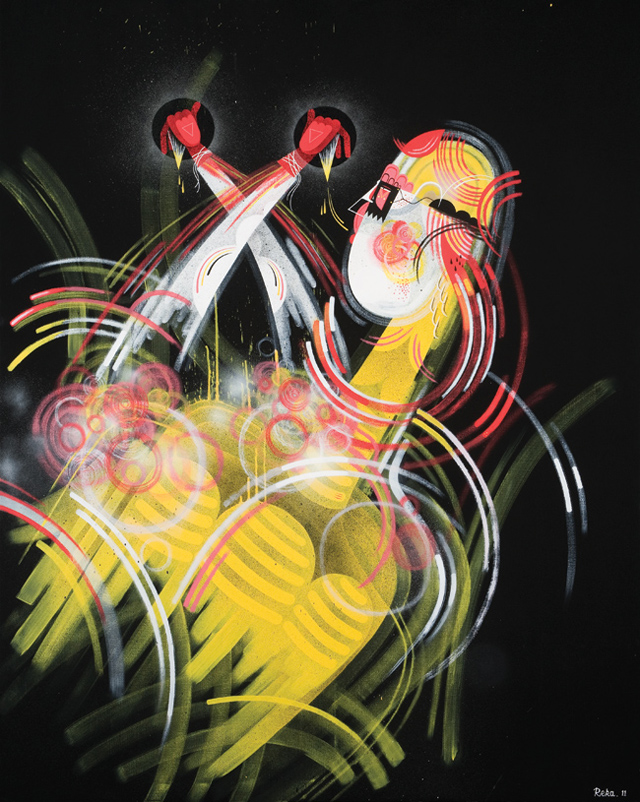
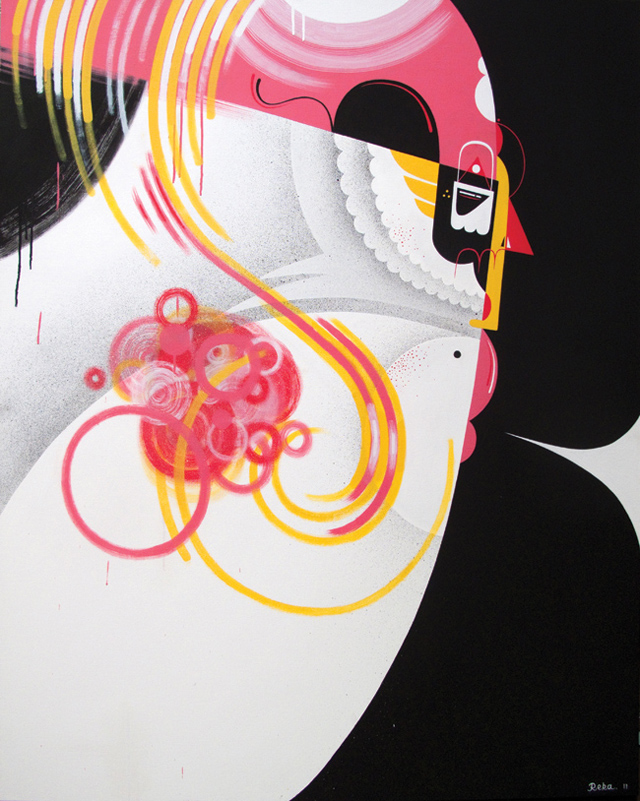
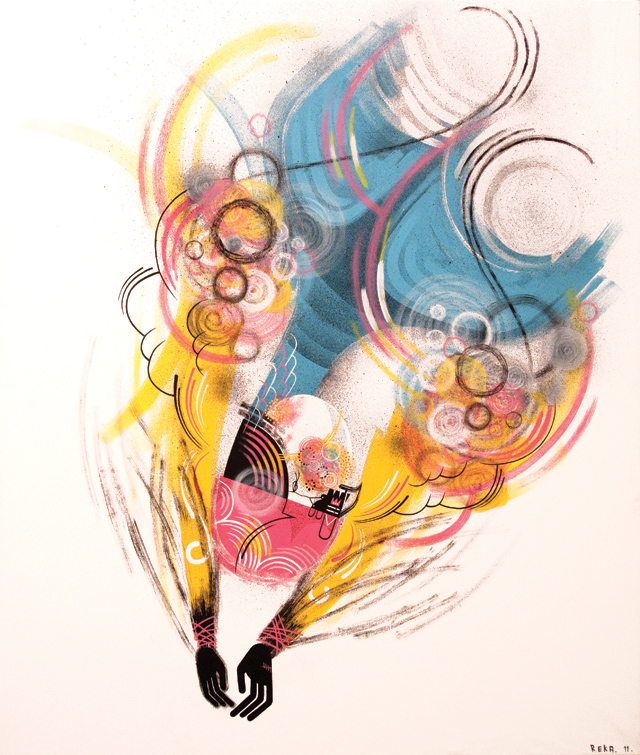


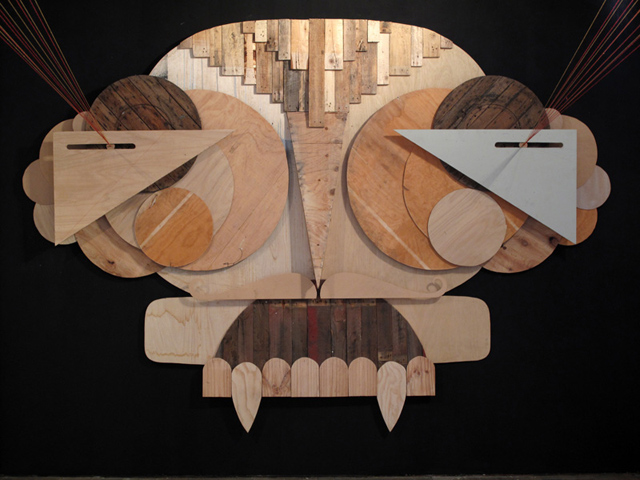
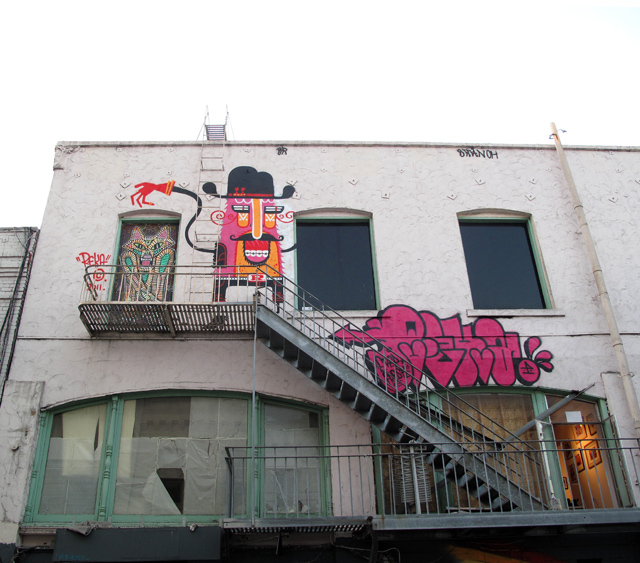

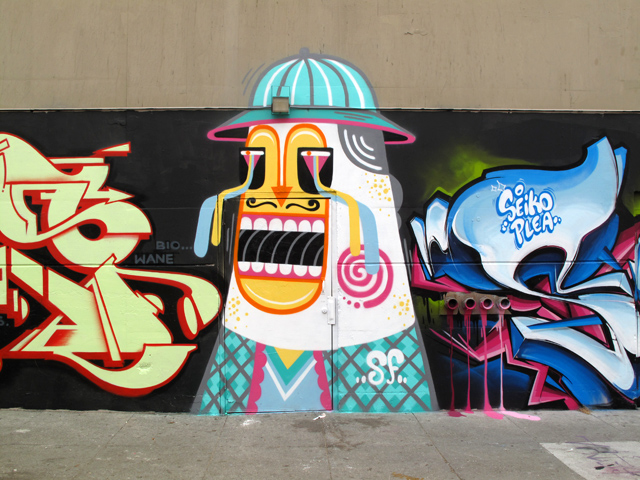
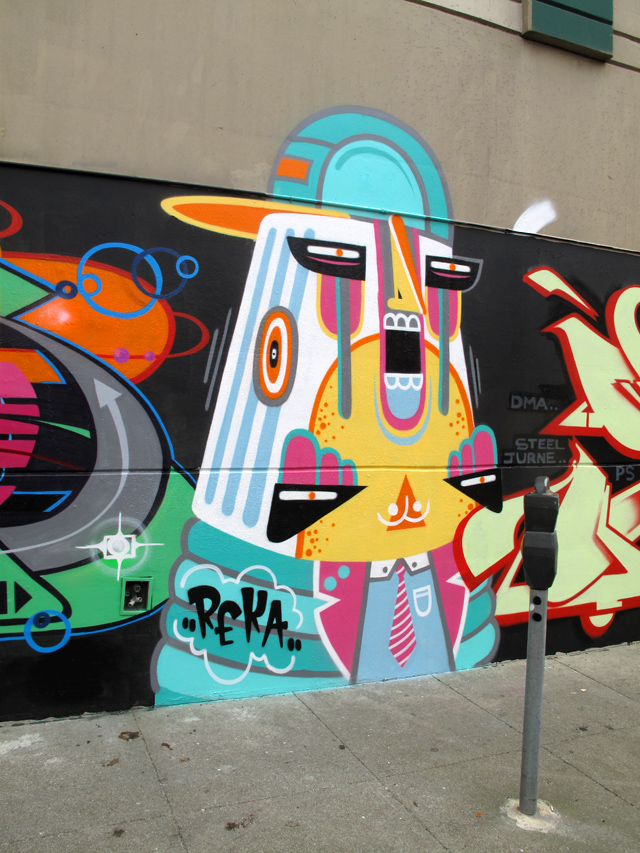
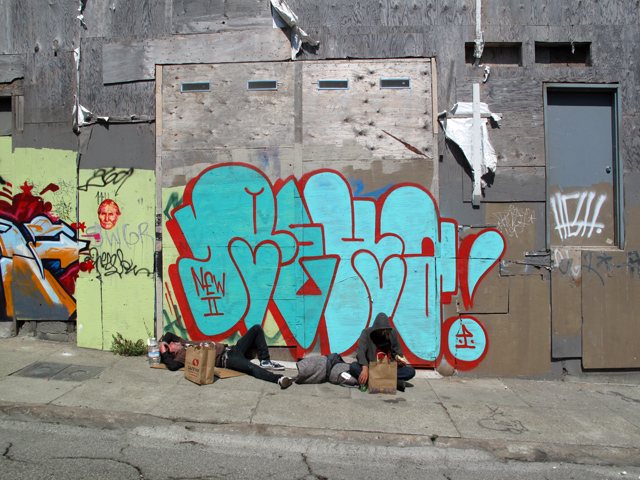
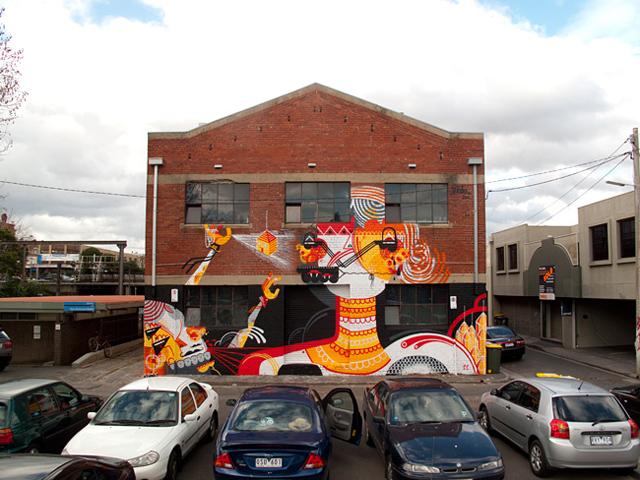
All photos courtesy of Reka
